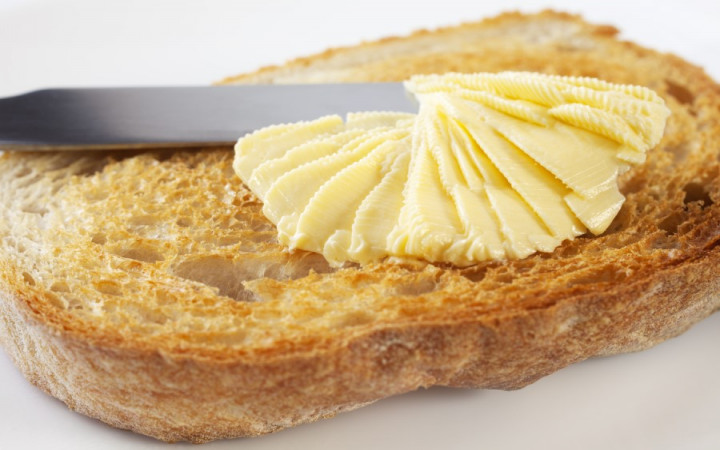Today’s Wonder of the Day was inspired by liliana. liliana Wonders, “how is margerine different than butter” Thanks for WONDERing with us, liliana!
What are some of your favorite foods? Do you like pancakes or toast in the morning? What about mashed potatoes or corn on the cob for dinner? Can you watch a movie without popping up a delicious bowl of popcorn?
If those are some of your favorite foods, then we bet there's another substance you like a lot. It's creamy and yellow and goes great on toast, pancakes, mashed potatoes, corn on the cob, and popcorn. What are we talking about? Butter, of course!
Depending upon your preferences, though, the creamy, yellow spread in your refrigerator might not be butter. Instead, it might be an alternative known as margarine. But what exactly is margarine and how does it differ from butter?
While butter has been around for hundreds of years, margarine is a more recent invention. Back in the 19th century, butter was a popular food and it was easy to make for farmers with dairy cattle. For others, however, it could be quite expensive.
French emperor Napoleon III challenged the scientists of his day to invent a cheaper alternative to butter that would still be similar in appearance and taste. In 1869, French chemist Hippolyte Mège-Mouriès combined beef tallow, milk, and margaric acid to create a substitute for butter that he called oleomargarine. Margarine's name derives from the Greek word for pearls, margarite, since margaric acid resembled milky, pearl-like drops.
Margarine was naturally white in color, so manufacturers added yellow dye to make it look more like butter. Although it was a cheaper substitute for butter, margarine didn't become popular right away. In many areas, margarine's struggle to compete with butter was the result of the dairy industry's efforts to restrict competition from the emerging margarine industry.
The dairy industry convinced many governments to impose special taxes on margarine, which made it more expensive. Some groups even persuaded some states to ban the use of artificial dyes in margarine, hoping that its natural white color would be less appetizing than traditional butter.
Margarine's popularity began to grow during times of war, when there were shortages of butter. Over time, special taxes and rules that sought to undermine margarine's popularity were changed. Today, margarine is a popular product that sits beside butter on the shelves of grocery stores everywhere.
Modern margarine is usually made from one or more animal or vegetable oils that have been hydrogenated. The process of hydrogenation helps plant oils to emulsify, which means they convert from a liquid to a fatty, semi-solid state.
Today, butter and margarine are very similar in terms of taste, appearance, price, and even calories. The main difference is what type of fat each contains. Butter tends to contain more saturated fat, since it's made from animal fat.
Margarine, on the other hand, usually contains unsaturated fats, since it's made from vegetable oils. These unsaturated fats help to reduce low-density lipoprotein (LDL) cholesterol, which is what health professionals consider to be "bad" cholesterol.
While margarine may seem like the healthier option when compared to butter, nutritionists warn that you should carefully check nutrition labels before choosing a product. Some margarines contain trans fat, which has been known to increase cholesterol levels and the risk of heart disease. When choosing a product, look for one with no trans fats and as few saturated fats as possible.





